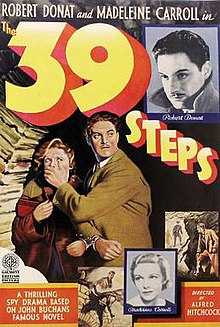The world of cinema within the 1930’s was still very much a developing one, but Europe seemed to be doing a good job of paving the way and releasing many films that would stay relevant through the test of time. Everyone was kind of doing their own thing, but a few of them really made timeless films that will be studied and appreciated for many more years to come.
One of the most defining things of the era came out of Germany, when Hitler began his rise to power. He was named Chancellor in 1933, and most of the countries creativity had been cast aside by the overwhelming emotions of fear and anxiety. Many of Germany’s most popular and vanguard filmmakers fled the dictatorship in the early months while they could. Personnel from all over the industry such as producers, directors, and actors alike all left their homeland to find work in Hollywood. Some notable directors who could be traced back to this specific circumstance include Billy Wilder, Douglas Sirk, Fritz Lang, and Max Ophuls.
Those who stayed in Germany were subjected to propaganda films like Leni Riefenstahl’s “Triumph of the Will”. It was one of the most famous films of the time, and Hitler even served as an unofficial executive producer. The film was supposed to be a documentary about the 1934 Nazi Party Congress in Nuremberg, but the cinematography made Hitler look like some sort of superhero. The film itself had newly-conceptual shots of aerial photography, long focus, and distorted perspective, making it a go-to film when it comes to studying propaganda.

Inspired by German Expressionism, Alfred Hitchcock worked in Great Britain and used some of the darker sides of what the camera could do when he directed The 39 Steps. His films got enough attention to build reputation for his techniques and as a director. The film is about a civilian in London who finds himself in the middle of a situation where it is up to him to stop a secret organization known only as the 39 steps from committing espionage. He is then mistaken for the murderer of another British counter-espionage agent and flees to Scotland. While in Scotland, he gets involved with a woman who could potentially help him stop the spies and clear his name. The British Film Institute named it the 4th best British film of the 20th century.

Filmmakers on the move to Hollywood had to deal with a set of production codes put forth by U.S. censorship boards. In 1927, Hays introduced a list of three codes or “general principles” No film shall be produced to lower moral standards, only correct forms of life are to be represented, and the law is not to be subject to ridicule, nor empathy shown to its violators. There were also certain minor things that were also censored, like nudity/suggestiveness, drug use, methods of crime, mistreatment of the U.S. flag, and even thing deemed by the board to be in bad taste. We can still see this type of censorship today when it comes to the MPAA and their controversial system of rating new films.
